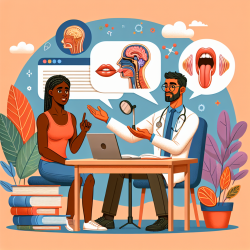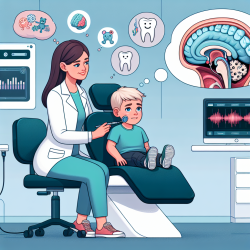As a Special Education Director, staying informed about the latest research and advancements in speech therapy is crucial for improving the quality of services provided to our students. One such valuable resource is the research article "Lispers and Tongue Thrusters" by Gladys Reid Jann, reviewed by Marie Crickmay. This article offers a comprehensive look at the evaluation and retraining of orofacial muscle behavior, particularly focusing on children with articulation deviations.
The research highlights three primary objectives:
- Re-assessing lispers in the context of the child's total orofacial muscle behavior.
- Encouraging collaboration among speech therapists, dentists, and orthodontists to address the total dynamic syndrome.
- Providing methods for evaluating and retraining orofacial muscle patterns, including the correction of faulty swallowing patterns, thumb-sucking, and dental occlusion.
For practitioners looking to enhance their skills and effectiveness in treating lispers and tongue thrusters, here are some key takeaways from the research:
1. Comprehensive Assessment
Traditionally, speech therapists focused primarily on teaching children to produce the correct sounds and integrating these sounds into their speech. However, the research emphasizes the importance of a holistic assessment of the child's orofacial muscle behavior. This includes evaluating the child's swallowing patterns, thumb-sucking habits, and dental occlusion. By understanding the broader context of the child's muscle behavior, therapists can develop more effective treatment plans.
2. Interdisciplinary Collaboration
The article encourages a collaborative approach involving speech therapists, dentists, and orthodontists. Each professional brings a unique perspective and expertise, contributing to a more comprehensive understanding of the child's condition. This interdisciplinary collaboration can lead to more effective and well-rounded treatment strategies.
3. Practical Methods for Retraining
The research provides practical methods for evaluating and retraining orofacial muscle patterns. These methods include exercises and techniques to correct faulty swallowing patterns and address habits like thumb-sucking. By incorporating these methods into their practice, therapists can help children develop healthier muscle patterns, leading to more effective speech therapy outcomes.
4. Continuous Learning and Adaptation
One of the key messages from the research is the importance of continuous learning and adaptation. Speech therapists should stay updated with the latest research and advancements in the field. Attending conferences, participating in webinars, and reading relevant publications can provide valuable insights and new techniques that can be integrated into their practice.
5. Utilizing Online Therapy Services
With the increasing demand for speech therapy services and the challenge of therapist staffing shortages, online therapy services like those provided by TinyEYE can be a valuable resource. Online therapy allows for flexible scheduling and access to specialized therapists, ensuring that students receive the support they need, even in remote or underserved areas.
By implementing the outcomes of this research and continuously seeking opportunities for professional development, speech therapists can enhance their skills and provide more effective therapy to children with articulation deviations.
To read the original research paper, please follow this link: Lispers and tongue thrusters.










